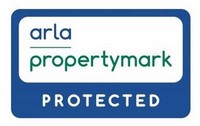Sell, let or buy property with Hunters
We’ve worked in Harrogate for over 20 years and we have in-depth, local knowledge about the property market here.
Our experienced team of local estate agents will maximise each and every opportunity for you.
Selling or renting your Harrogate property is simple when you do it with the right people – call us now to book your free valuation.
Our services
- Free property valuation (online or in-person)
- 24/7 support through your My Hunters portal
- A fully managed sale
- Expert advice from our experienced local agents
- Bespoke, professional marketing packages for your property
- Flexible lettings services, from securing tenants right through to fully managing your property
Let your property with ease
- Personal service offered by Lindsay who is your main point of contact from start to finish throughout the entire letting journey
- Call her on her mobile, drop her a whatsapp, ping over an e-mail – she is at your service however suits you best
- Alongside looking after Landlords Lindsay helps prospective Tenants find their perfect home which means she can give you exceptional advice about what Tenants are looking for and how to maximise the rent of your property
- If you are looking to purchase an investment property Lindsay can also assist you by giving her expert advice on properties you are viewing so you can be confident that it is the right investment for you
- Our high street office has a friendly buzz – pop in for a coffee and a chat!
Why Choose Hunters Harrogate?
Marketing that works for you
We make your property stand out from the crowd. We give you advice on how to best present your property to buyers or tenants, and work with you to create the perfect marketing package. This includes professional photography because high-quality images are vital for your sale or let.
More than 98% of buyers start searching for their new home online, and images of your property are the first thing they’ll see.
Access information about your sale or let – 24/7
Your My Hunters portal lets you see everything that’s happening with your property. Simply log in to see all your upcoming viewings, any feedback from viewings and to review offers. This portal means that you always know what’s happening, and you can contact our team through it too. The portal is online so you can access it 24/7.
Guidance and support from our expert team
Having worked in Harrogate for over 20 years, we’re the most experienced estate agent in the area. As our customer, you’ll benefit from the expertise and knowledge we’ve gained over the years, and we guide you through each and every aspect of your sale or let.
Lettings packages that work for you
Our expert team will give you the best advice and support, and create a lettings package that works for you. We can be as involved as you want us to be; from a tenant find only service, right through to full management of your let.
Our resource library has all the guidance and information you need to be fully informed about what’s expected from you as a landlord. However, we’re always here to talk this through with you, and to answer any questions you may have.
Working locally
Our local team knows everything there is to know about Harrogate’s property market. We talk you through who your property appeals to and how to best market it to them. Marketing is targeted locally, but also further afield through the property portals like Rightmove, OnTheMarket and Zoopla.
Book your free valuation
Get in touch with us now to book your free valuation. We can come out to see you and visit the property, or you can start with an online valuation, to get a rough estimate.
Why live in Harrogate?
Harrogate is a gorgeous, sought-after spa town in North Yorkshire. With great transport links to the nearby cities of York and Leeds, as well as Leeds Bradford Airport, the town has become a cosmopolitan commuter base.
There’s a wide variety of properties available to buy or rent in Harrogate, including terraced houses, flats, bungalows, semi-detached and detached properties.
The town centre has retained an impressive amount of green space, with the Stray providing 200 acres of grassland to enjoy.
There are great shopping facilities in Harrogate, with a wide selection of independent stores, specialist boutiques, luxury brands, high street names and larger shopping centres.
Choose from an excellent variety of restaurants and cafes offering cuisines from around the world, and for an evening out, there’s cocktail bars, pubs, breweries, clubs and more on offer.
Harrogate is known as a spa town and it doesn’t disappoint with several luxurious spa facilities on offer here. There’s lots to enjoy nearby, including historic halls and abbeys to visit, and the beautiful Yorkshire Dales.
If you need to report a repair on your rental property, please click on the button below:
This Office is a Member of Client Money Protection Scheme; ARLA, C0015249

Client Money Protection Certificate
Safeagent Accreditation Certificate
Propertymark Conduct & Membership Rules
Preferred suppliers of Hunters Harrogate











